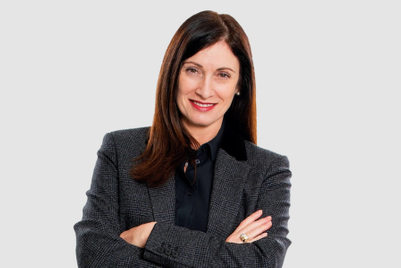
WPP has slashed staff bonuses and halved its dividend, after a 5.8% slump in Q2 revenues, and said incoming chief executive Cindy Rose will review the company’s strategy.
Outgoing CEO Mark Read, who hands over to Rose on September 1, had already issued a revenue and profit warning in an unscheduled trading update on July 9, and today’s half-year results confirmed the extent of the slump.
WPP Media, formerly known as Group M, was down 4.7% because of “cuts to client spending and lower net new business” and the impact of losses such as Coca-Cola in North America.
The integrated creative agencies did worse, diving 7.2% “as a result of lower overall client spending, particularly at Ogilvy, which declined high-single digits in the first half”. However, growth at Ogilvy in the UK was a rare bright spot. VML and Hogarth “performed relatively better”, down low single-digits and flat, respectively.
All of WPP’s key markets declined. North America was down 4.6%, the UK 6.5%, Germany 1.6%, China 15.9% and India 3.9%.
Across the first six months of the year, revenues less pass-through costs tumbled 4.3% to $6.7 billion (£5 billion) and headline operating profit fell 29% to $552 million (£412 million).
Read admitted conditions have been “challenging” and he halved the dividend payout to shareholders to 7.5p a share – “ahead of a review of the strategy and future capital allocation policy, which Cindy Rose will lead”.
The British agency group acknowledged the significance of the dividend cut but said it would give Rose, a Microsoft executive and WPP non-executive director for the past six years, an opportunity to consider how best to allocate resources and investment.
“The board recognises the importance of dividends to shareholders and today's step balances that, creating room for our incoming CEO to review the group's strategy and capital allocation policy while maintaining financial flexibility,” WPP said.
Net debt was $4.56 billion (£3.4 billion) at the end of June, down $268 million (£200 million) on a year earlier, but the ratio of net debt to Ebitda (earnings before exceptional items), which is a key metric for some investors, was 1.98x. That is “outside our target range of 1.5x-1.75x”, the company admitted.
WPP’s share price has already halved since the start of 2025, and it fell about 4% to $5.16 (£3.85) in early trading, following news of the dividend cut. The stock is now at its lowest level since the start of 2009, during the depths of the global financial crisis, giving the company a valuation of about $5.36 billion (£4 billion).
Cost-cutting in multiple areas
The half-year results showed WPP has been looking to cut costs in multiple areas.
The group slashed staff incentives by 60% to $79.06 million (£59 million) from $198.32 million (£148 million) for the same period a year earlier for its global workforce of 104,000.
WPP also confirmed it has cut staff numbers by about 4000 since the end of 2024, when it had 108,000 people.
Over the past 12 months, there have been 7000 role reductions at WPP, although it also sold corporate PR firm FGS Global in that period, which had some impact on staff numbers and incentives.
In another sign of cost-cutting, WPP said it has reduced its use of freelancers by 13% in the last year and 25% in two years, “driven by enhanced internal capabilities and technology-enabled efficiencies.”
WPP is sticking to its forecast from July that it expects annual revenues to decline by between 3% and 5% in 2025. Its 5.8% decline in Q2 contrasts with its main rivals, Publicis Groupe and Omnicom, both of which grew in the period.
Farewell from Read
Read, who has been chief executive since 2018 and spent decades at WPP after joining in 1989, said: “It has been a challenging first half, given pressures on client spending and a slower new-business environment.
“We have, however, made significant progress on the repositioning of WPP Media, simplifying its organisational model to increase effectiveness and reduce costs. Meanwhile, the acquisition of InfoSum, the launch of Open Intelligence and the continued adoption of WPP Open all strengthen our data and technology capabilities.”
He bade farewell in his final results statement as CEO by saying: "WPP is a company with enormous strengths in creativity and media, technology and AI, talented people, deep client relationships and unmatched global reach.
“Throughout my seven years as CEO, technological innovation has been a constant, and I believe that, thanks to our investment in AI, we can look to the future with confidence. I would like to thank our clients for their partnership and our people for their dedication, and I wish them, and Cindy, every success in the future."


.jpg&h=268&w=401&q=100&v=20250320&c=1)



.png&h=268&w=401&q=100&v=20250320&c=1)



